Dial-a-Tree Virtual Tree Nursery
Tree Stuff Blog
Bush Milling a Lusitanica Tree - by Ben Gaia, www.dialatree.co.nz
www.dialatree.co.nz
The Tree
Cupressus lusitanica is hard to beat for fast growing macrocarpa-like timber. The timber is hard and strong like all cypress wood, and Lusitanica is one of the lightest in colour, with white sapwood and golden heartwood. The potential of this species is immense, especially considering its relatively fast growth in New Zealand.
See enthusiastic article on lusitanica trees. This 26 year old tree pictured measures 50cm DHB and all the way up a 2.8 metre clear pruned log so the diameter growth rate matches many Radiata stands of the same age. I grew this tree from a seed locally sourced in 1996 so it is "Second Generation West Coast" provenance, and it was selected for its rapid growth and health.
They are losing popularity now to modern macrocarpa trees. Luckily, some far sighted foresters planted enough lusitanicas 20-something years ago, so that we can now mill them with great pleasure - and produce a high quality timber sought after by international markets and by local builders in the know.

26 year old lusitanica on coastal sand. The sea wind shears off the top which means I could only prune it up to 3 metres.
Having felled the tree it sat resting on three branches which can be useful for holding the log firm and still for the first cuts. All the top branches down to 50mm thick are carted off for firewood, quick drying and hot burning. Perks of the job!

The log resting on three points.
I trimmed off all the other branches and narrowed each end to fit the ladder which is then fixed on with four screws and some battens into the log and levelled across it.

The ladder fixed to the felled and trimmed log.
Alaska Mill
The first cut using the Alaska mill uses a ladder as a straight edge.The depth is then set on the milling frame holding the chainsaw. The frame is aluminium, known as an Alaska Mill, it steadies your chainsaw for long even cuts. It is popular with single tree millers as it is portable. It can be used off road to mill a log which can then be carried out as timber. With good planning this tree is in a back paddock accessible by Subaru Outback so I could fill the back up with firewood to take home each trip. My saw is an Italian EFCO MTH 5600, it starts and burbles beautifully, with a 24 inch Sugi Hara bar, (600mm bar) that once mounted to the frame only cuts to a width of 450mm max. This is basically the smallest Alaska mill setup you can get and it cost all up around $1000. Your log and your cutting diameter must be less than the length of the saw blade, so the sides of this fat Lusi log have to be trimmed off so the gear will fit.
The pictures show the mill set up and on its way through the first cut. I had to work uphill this time but sometimes you can use gravity a bit and work down hill. You end up with a flat surface which you can use as a guide for further cuts.

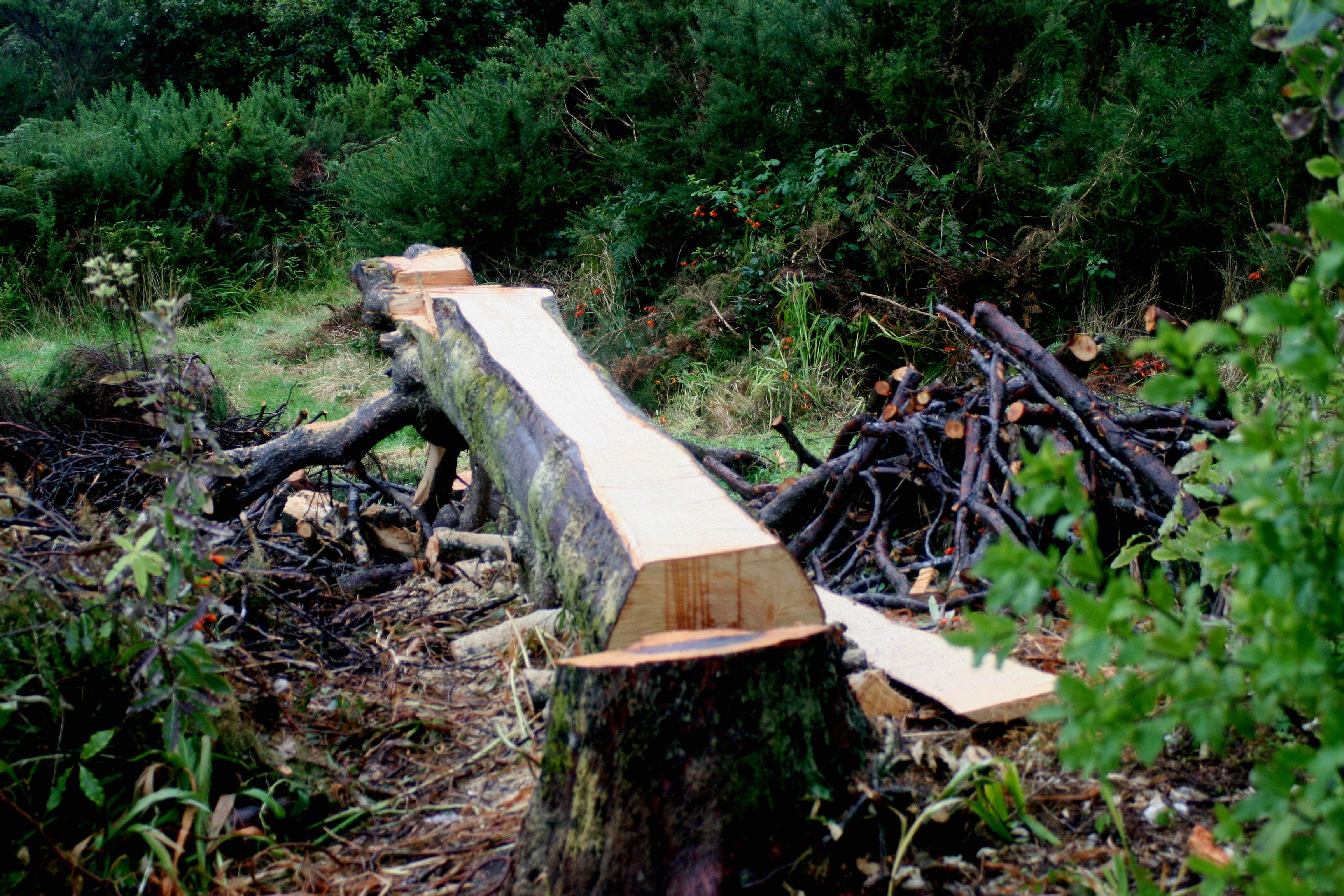
Flipping
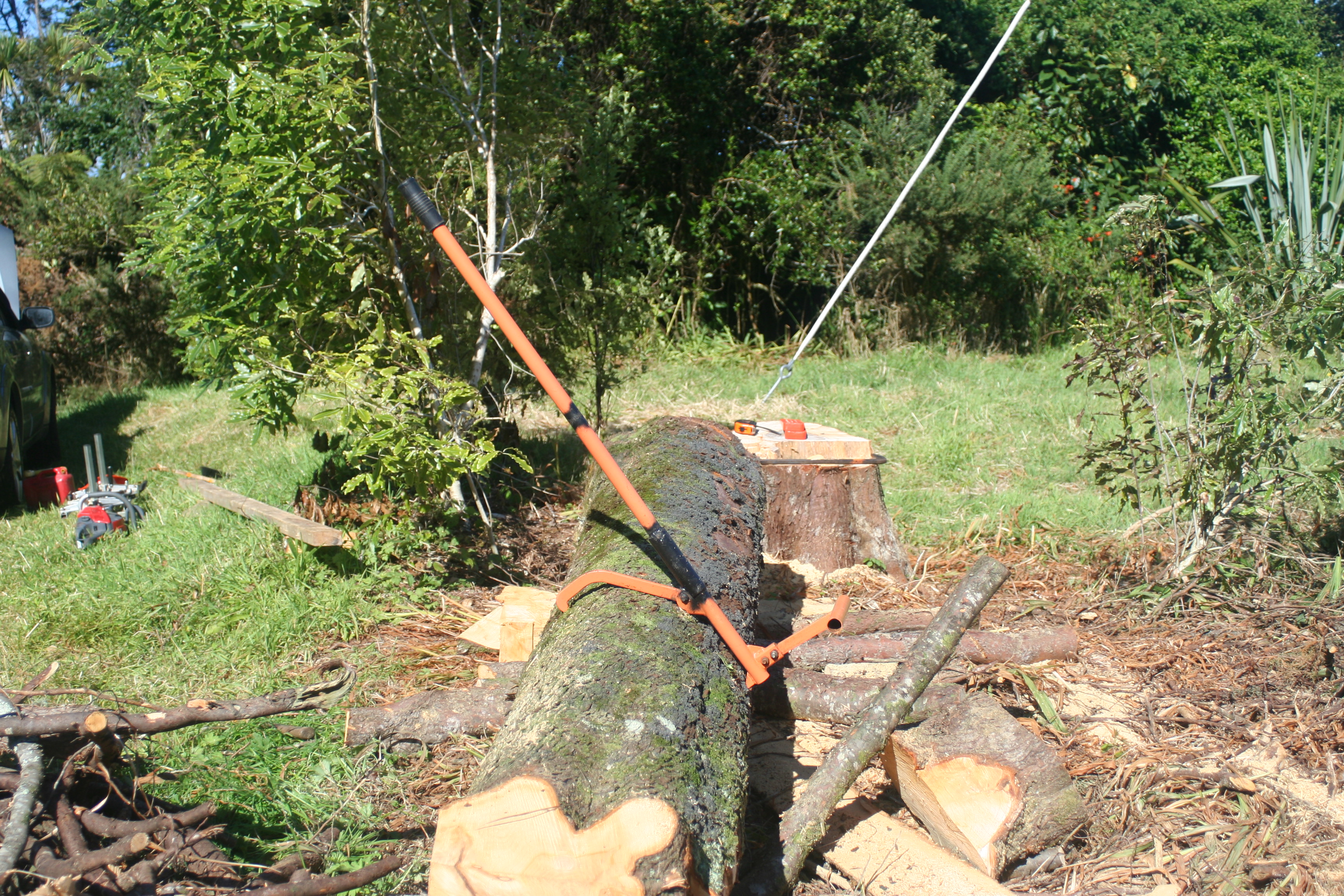

Then I flipped the log over, using gravity, levers, pre-placed branches to roll it onto, and a tool called a Peavey or log roller. From ths position, our next two horizontal cuts with the Alaska mill produced a 3 metre 100mm thick coffee-table slab. Still leaving a remaining squared off log beam 300mm wide to cut some wide rafters or studs out of. This will also largely contain the heartwood through the centre of the tree. About 40% of the diameter is heartwood on this relatively young tree.
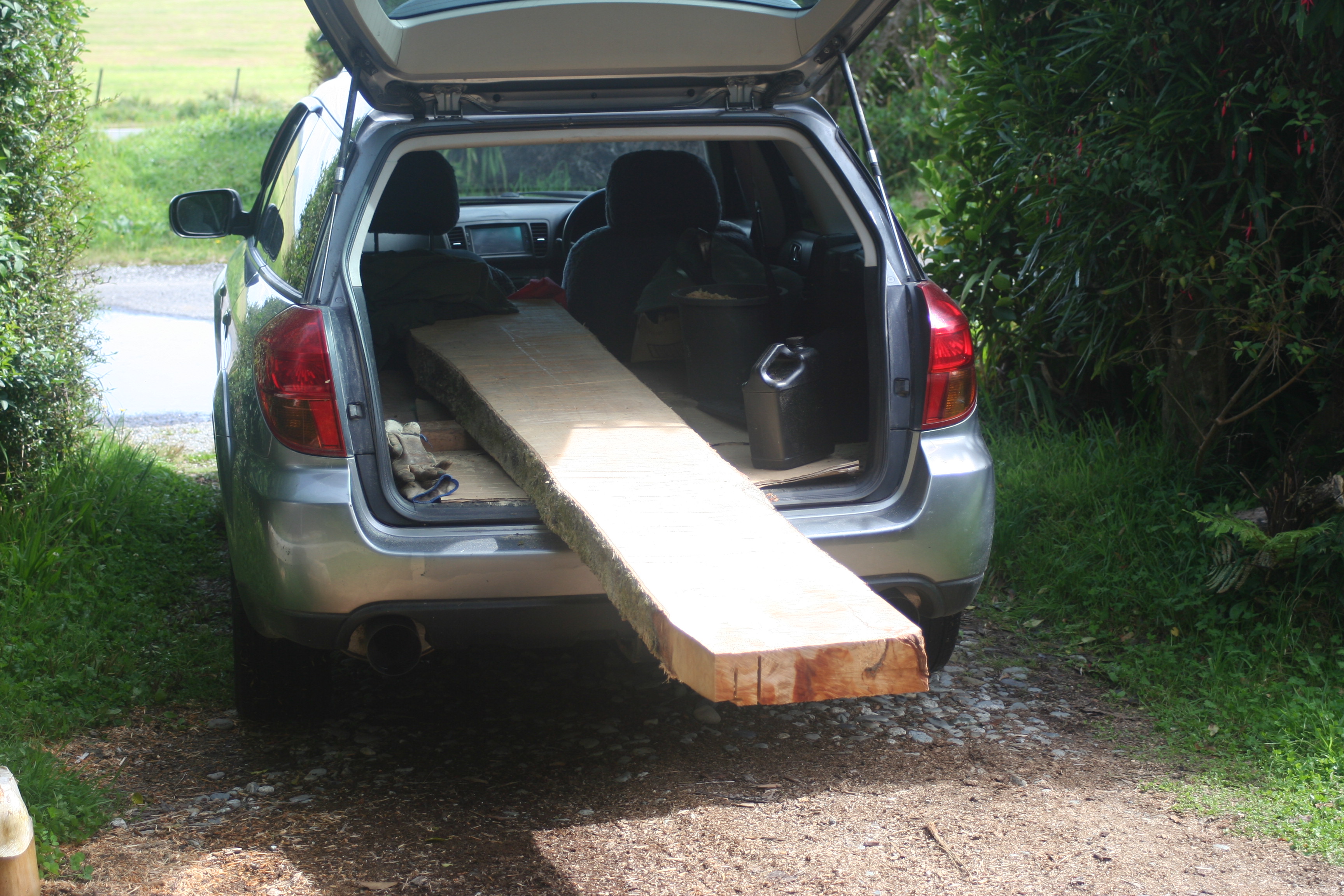
The real prize, a gigantic coffee table, or something...
Tiny Sawmill

The $100 dollar tiny sawmill

The next stage was to screw on a four by two (100mm by 50mm) dressed 4 metre long stud, as a guide rail for the tiny sawmill. The tiny sawmill jig consists of a right angle and swivel so you fit it onto the rail and walk down the log cutting vertically downwards. I used the small Stihl MS150 chainsaw for these cuts. Like a knife through milk! The jig was bought on the internet for $70, but adapted by me with the large plywood sawblade holder, after losing chains to cold steel when the saw inevitably moves out of position during its labours. This whole setup can be carried out in a wheelbarrow if you live near your forest. I have learnt to do two cuts or more, so you only cut half the depth at a time. This enabes the saw to cut faster with less effort (and fuel). Care must be taken to follow the cut accurately the second time for an even cut surface.
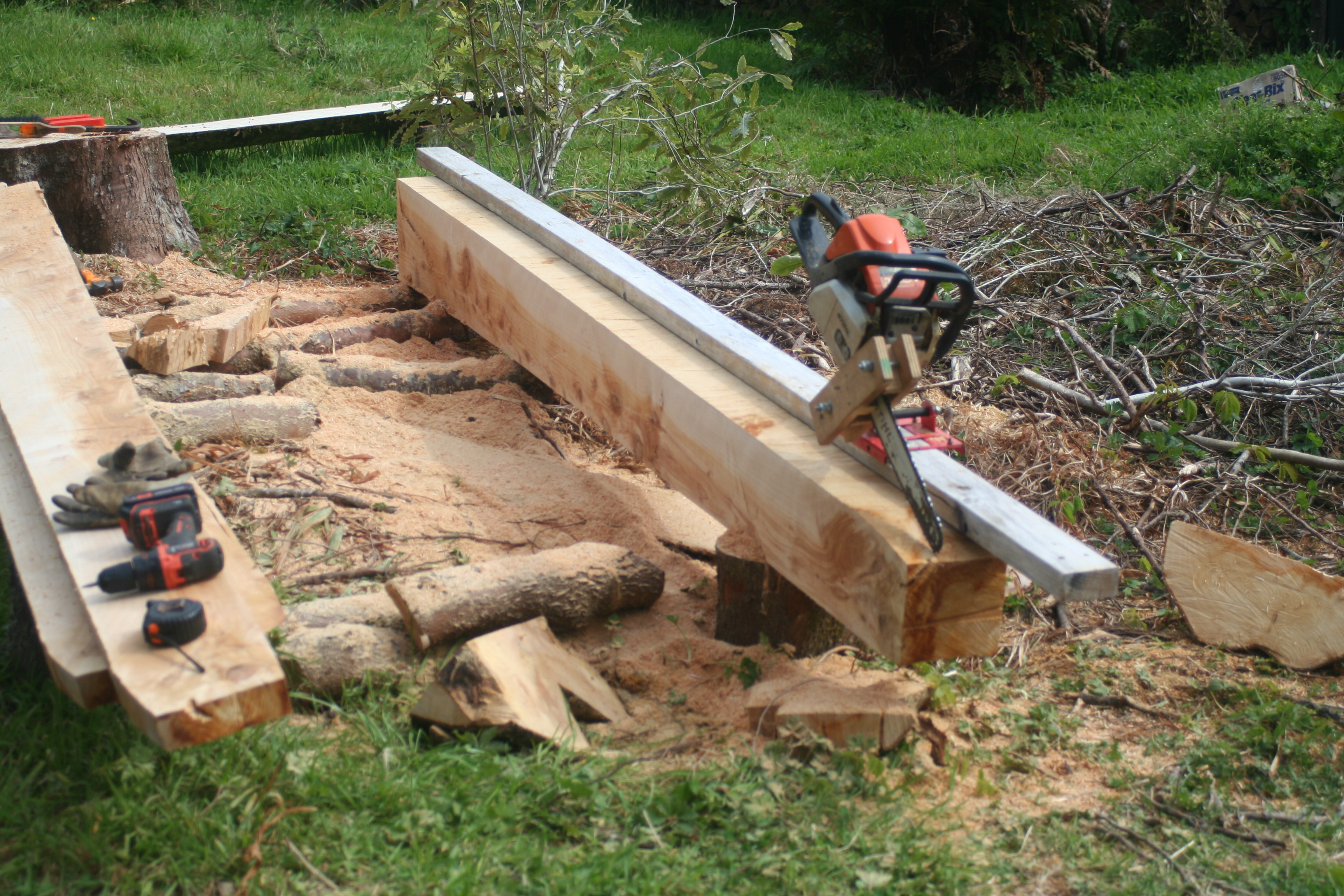
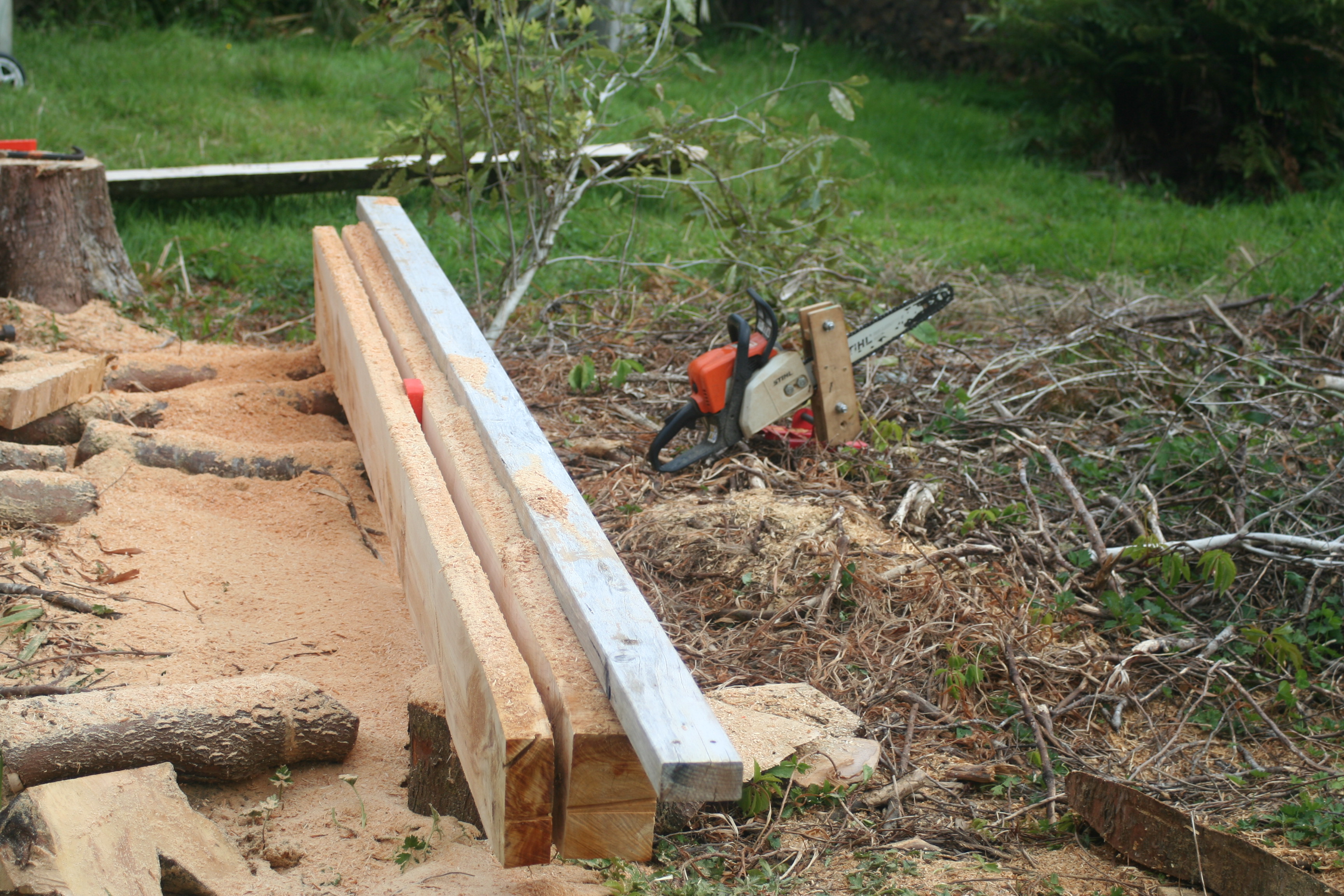
The result was three good 50mm by 300mm slabs 3 metres long which will get cut in half for strong "six by two" wall studs.
You need to be thoughtfully prepared with all the right tools and spares especially if milling in the forest away from base somewhere. Tools, fuel mix, bar oil, plug spanner, tape measure. Have a milling box with a spare or two of everything. There are always breakdowns, and careful planning means you have that extra screw, drill bit, battery or fuel on hand when needed. Breaks in the work and adjusters going Ping! off into the bushes are all a constant part of the fun.This saves long stoppages and maximises your work time actually cutting. Sawmilling seems to be all about solving engineering problems. I have to admit it is very hard work though and the midday heat should be avoided. Take lots of water and coffee. A wee hearth brush is good for avoiding sawdust dandruff, and for clearing the work surface during pauses in cutting. A Jemmy bar and some wedges will help the mill flow through the long heavy cuts. Do lots of stretching and watch your work positioning to avoid shoulder or back injury.
Whole articles could be written on chain sharpening. A ripping chain for milling along the grain, should be sharpened at a much more square angle of 10 to 15 degrees across the chain, and the depth gauges taken down deeper than usual for a good chop. It is hard work but it shouldn't be THAT hard that your cut takes all day.
Safety is also important, you will know all about chainsaws, headgear, and tree felling by now, but there are extra things to watch with sawmilling. Be especially aware of the weight of the moving log as you fling it about like an Egyptian. Make sure your tree is well supported. When moving or rolling it, watch it falls away from you, as you do not want to be pinned under a 1500kg log with a snapped leg. Just in case, always also have one of these new fangled Mobile Telephones with you, to contact someone if you are cast, or squished suddenly. If working alone, leave a note of your location and have a rescue plan with a mate.
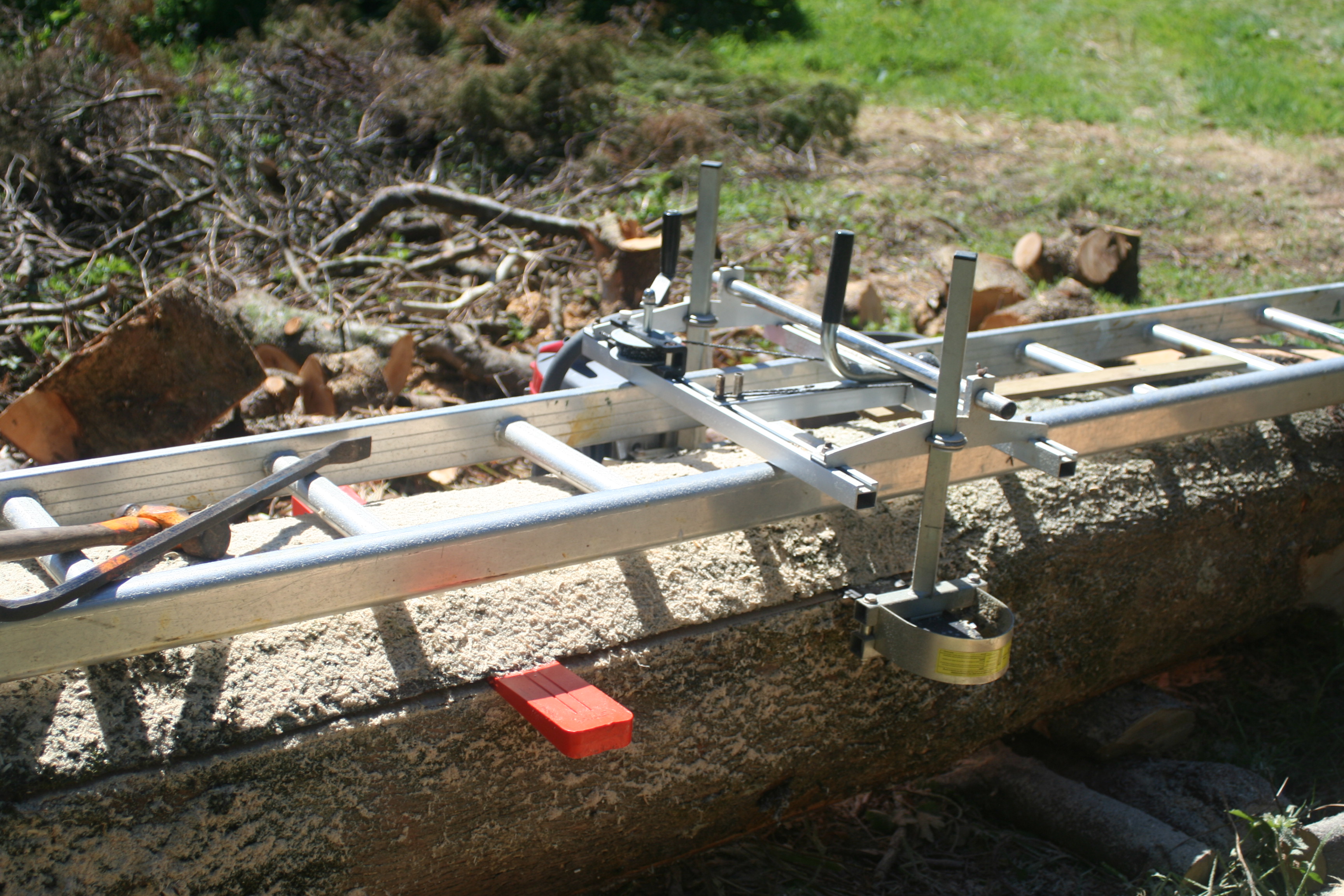
Wedging open the cut behind the saw.
We grow fruit and timber trees in the extreme climate of the South Island. Explore our mail order nursery for organic fruit and forestry trees.
Back to dialatree - and tree blog archive - www.dialatree.co.nz












